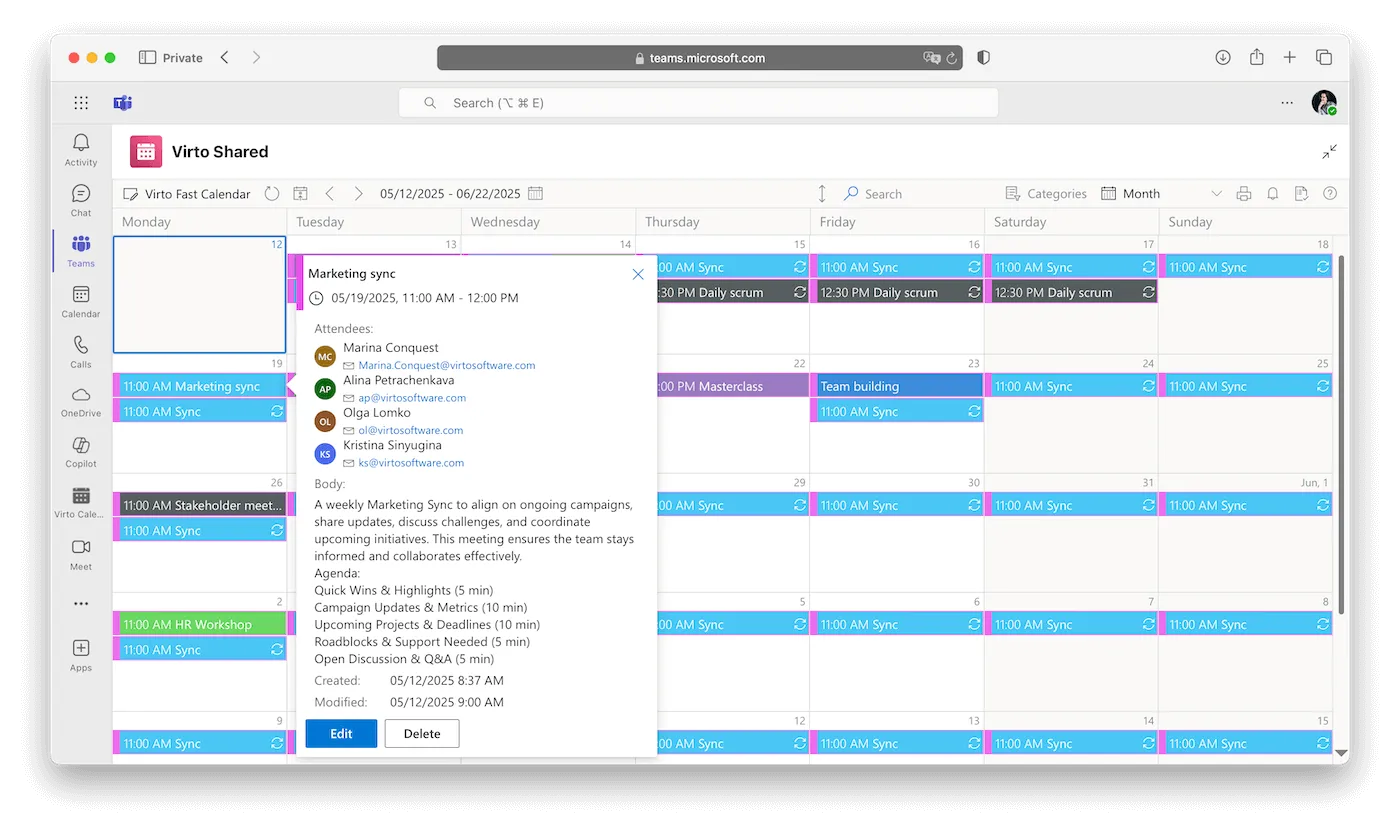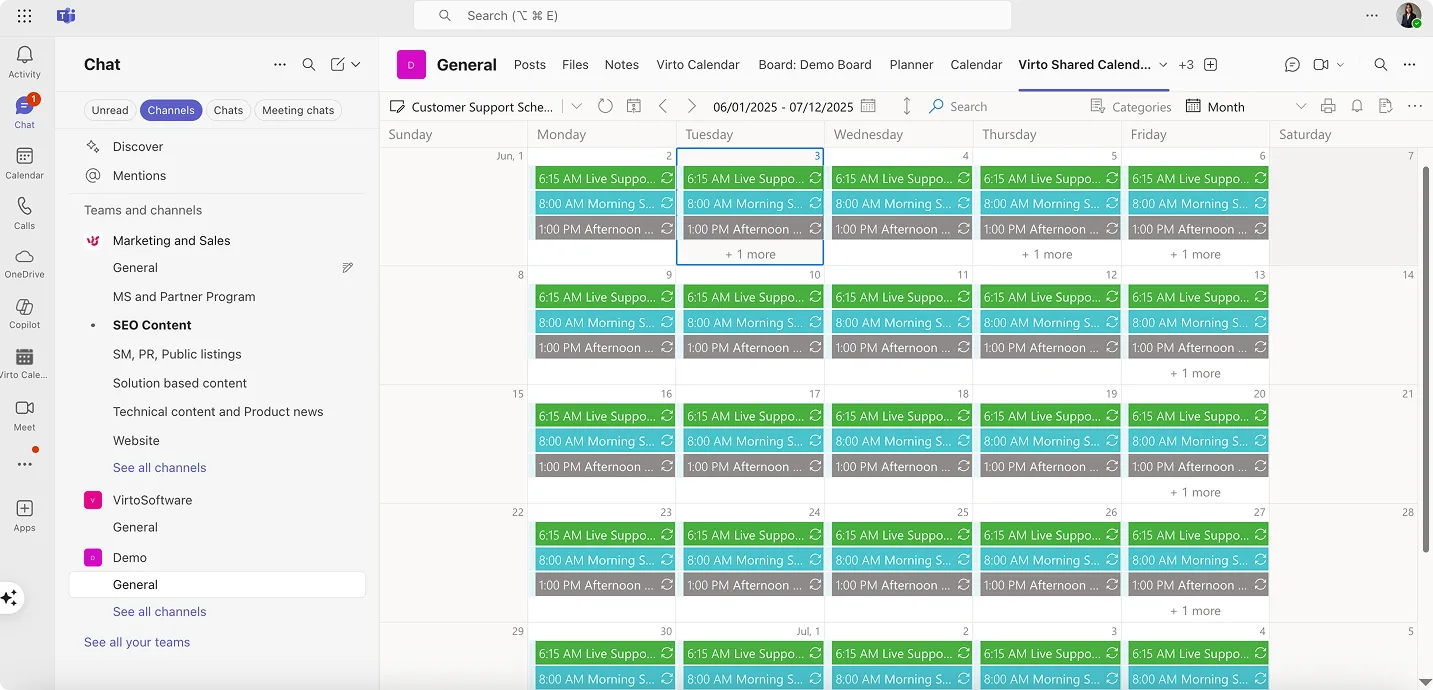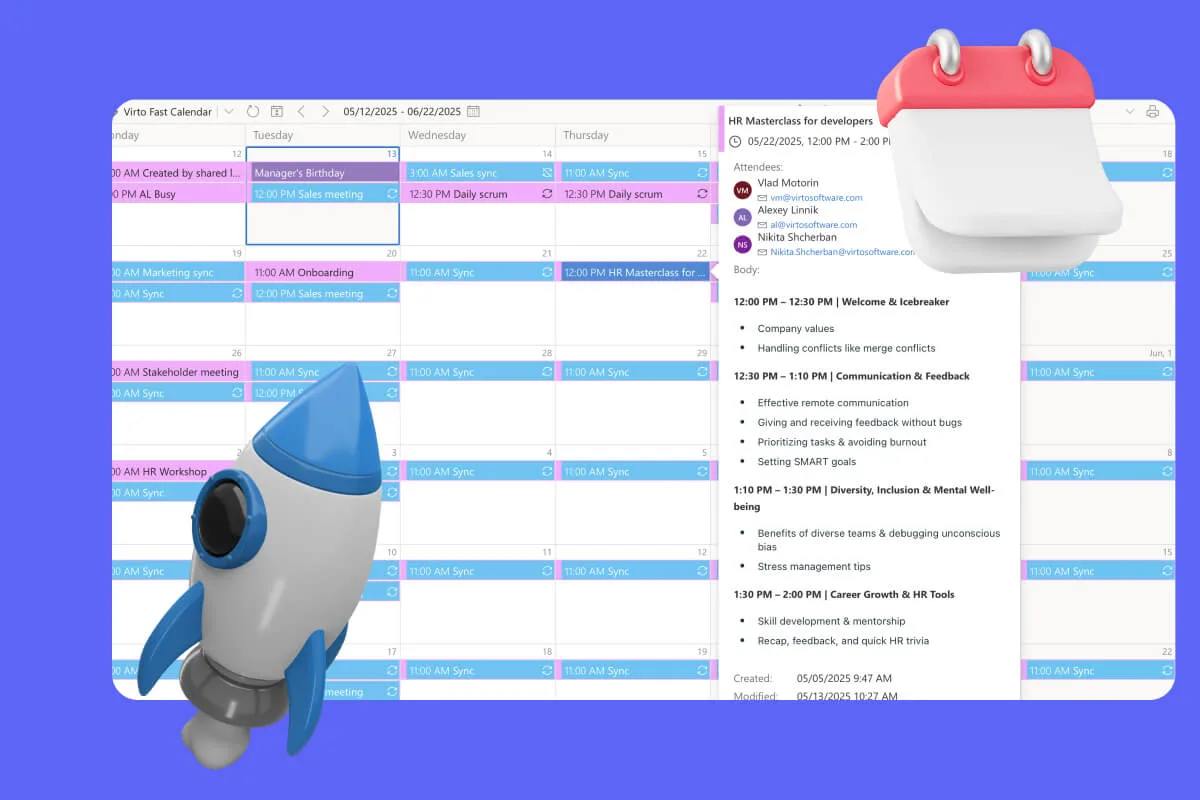If you’ve ever been involved in managing a project — whether in business, education, or any other field — you’ve probably run into a whole bunch of terms that sound pretty similar: ‘project schedule’, ‘baseline schedule’, ‘integrated timeline’, and so on. It can get confusing fast.
One of the most important of these is the master schedule. But what is a master schedule, exactly? In simple terms, it’s a big-picture, strategic timeline that pulls together all the moving parts of a project or operation. You might also hear it called a schedule master or part of master scheduling practices. No matter the name, it’s all about making sure everyone is on the same page.
Businesses, schools, and project teams rely on master schedules to stay organized and deliver results. Whether you’re managing a project master schedule for a product launch or coordinating a master plan schedule for a university semester, having one clear view of all activities is key.
In this article, we’ll break down the master schedule definition, show you a master schedule example, and explain what master schedule is used for in real-world scenarios. You’ll also learn what master scheduling is and why it’s an essential skill for modern project and operations management.
And if you’re wondering how to make a master schedule, don’t worry — we’ll cover practical tips and tools to help you get started with master schedule planning and create a schedule master that actually works.
👉Before you start, check out the basics in our guide: How to Build Cross Functional Collaboration
What Is a Master Schedule — Definition & Why It Matters
If you’ve ever found yourself juggling multiple projects, deadlines, and teams—while secretly wishing for a magic button that shows everything in one place—you’re not alone. That’s where the concept of a master schedule comes in.
But hold up—what is a master schedule exactly? And what is master scheduling in practice? Let’s unpack it.
What is master scheduling?
Ever wish you had one master timeline where everything—every task, every deadline, every moving part—comes together perfectly? That’s exactly what a master schedule is all about.
At its core, a master schedule is a centralized, strategic plan that pulls in data from all kinds of sources: project calendars, different departments, individual teams, and even external events. It acts as a single source of truth to coordinate everything from deadlines to resource allocation, task dependencies, and project progress.
In other words: it’s your project’s control center. Whether you’re managing short-term goals or crafting a long-term roadmap, a schedule master helps you keep it all together.
What a master schedule can cover
Here’s the cool part—master schedules aren’t limited to one type of project or business. They can handle:
- Project tasks and phases
- Production cycles
- Team schedules and shifts
- Academic timelines
- Corporate events and company-wide initiatives

Depending on your needs, your master schedule might run on a daily, weekly, monthly, or even yearly cycle. And it can take many forms: a visual calendar, a Gantt chart, a spreadsheet, or a dynamic digital tool built into a project management platform.
👉What is meant by master schedule? A master schedule is exactly what it sounds like — the master plan that brings order to the chaos. It’s a centralized timeline that combines information from multiple sources: project plans, team schedules, department calendars, and even external factors.
In short: it’s the big-picture plan that helps teams work smarter, not harder.
👉What is the master scheduling? Master scheduling is the process of creating and managing the master schedule. It’s not just about setting dates and filling in a calendar — it’s about strategically coordinating people, tasks, and resources to ensure everything runs smoothly.
When you’re doing master scheduling, you’re making decisions like:
- What needs to happen first?
- How long will each task take?
- What resources (people, equipment, time) are available?
- Where are the potential bottlenecks or risks?
- How can we adjust if things change?
In other words, master scheduling turns your goals and plans into a real, actionable timeline — one that the entire team can follow.
Elements & formats of a master schedule
So what goes into building a solid master schedule example? Let’s break it down:
- Project or phase start and finish dates
- Task deadlines and major milestones
- Resource loading (people, equipment, spaces)
- Task and process dependencies
- Waiting periods, approval windows, review cycles
- Internal and external events that impact timelines
Just like a great recipe, your master schedule can take different forms depending on where and how it’s used:
- General master schedule — an overarching schedule that coordinates everything: meetings, deadlines, product releases, events, vacations, and more. Think of it as the bird’s-eye view for your entire company or school.
- Summary master schedule — combines data from multiple sources, such as project calendars, department timelines (marketing, dev, production), and external events. Super useful for big organizations juggling lots of simultaneous projects.
- The classic project master schedule — a strategic, management-focused timeline that tracks dependencies, KPIs, project phases, resource allocation, and delivery deadlines. Used in both business and education environments.
What is the difference between master schedule and baseline schedule?
Here’s a quick comparison to clear it up:
| Master schedule | Baseline schedule | |
| Purpose | Active, real-time project/company schedule | Original, fixed project schedule |
| Flexibility | Continuously updated | Static (used for tracking deviations) |
| Usage | Daily management, resource coordination | Deviation analysis, project performance review |
| System integration | Aggregates data from multiple sources | Defined at project kickoff |
In short: the master schedule is your living, breathing roadmap. The baseline schedule is your benchmark — what you measure progress against.
👉What is the difference between master schedule and baseline schedule? A master schedule is your active, living plan. It gets updated in real time as your project or operations evolve. It helps teams manage day-to-day work, track progress, and adjust when needed.
A baseline schedule is your frozen reference point. It’s the original, approved plan created at the start of a project. You don’t update it — instead, you compare your actual progress against the baseline to see if you’re on track or falling behind.
In short: the master schedule helps you manage the project now; the baseline schedule helps you understand how the project is performing compared to the original plan.
Why your business (and your team) needs a master schedule
Why bother with a master schedule? Simple: because chaos isn’t a strategy. Here’s what a well-built master plan schedule can do for you:
✅ Keeps all departments and stakeholders aligned
✅ Gives you real-time control over timelines and task completion
✅ Provides a foundation for performance analysis and risk management
✅ Acts as a single source of up-to-date info on work status and team workload
Whether you’re a project manager juggling multiple deadlines or a business leader trying to keep the big picture in focus, master schedule planning is one of the smartest ways to stay ahead of the game.
And if you’re wondering how to make a master schedule that works for your team — don’t worry, we’ve got you covered (keep reading!).
Why Use a Master Schedule? Big Benefits for Busy Teams
Let’s break down why smart businesses (and smart project managers!) rely on master scheduling — and how it can seriously level up your workflow:
| Benefit | Why it matters |
|---|---|
| 📅Centralized planning = no more scattered info | With a master schedule, everything lives in one place: 📅 tasks, 📅 events, 📅 processes, 📅 deadlines. No more duplicate calendars. No more “Wait, I thought marketing had already scheduled that?” moments. Everyone sees the same master plan schedule — always up to date, always reliable. |
| 🔍Total transparency (because surprises are for birthday parties) | When your team, leadership, and stakeholders all use the same master schedule, communication gets a major upgrade. ✅ Progress tracking becomes easy. ✅ Bottlenecks are visible. ✅ Risks can be spotted early. ✅ Cross-team dependencies are clear. Master schedule planning takes the guesswork out of coordination. No more wondering if the dev team’s sprint aligns with the marketing launch — it’s all mapped out. |
| 🚫Fewer crises, fewer conflicts | Missing a critical handoff or forgetting a resource constraint can derail even the best-laid plans. A solid project master schedule helps you avoid those headaches: ⏳ Clear deadlines ⏳ Approval periods ⏳ Resource availability ⏳ Automated reminders You’ll never accidentally schedule around public holidays, key staff vacations, or vendor constraints again. The master schedule helps you stay one step ahead. |
| ⚙️Smarter resource optimization | A well-crafted master schedule lets you balance workloads and spot potential overloads before they happen. You can: – See when your team is stretched thin – Shift priorities to avoid burnout – Manage equipment and space usage more efficiently This is especially valuable for IT teams, production environments, and support centers where timing and resource balance are critical. |
| 🤝Better cross-team communication | When HR, finance, IT, logistics, and leadership all work off the same master schedule, magic happens: ✅ Cross-functional projects run smoother ✅ Inter-departmental coordination improves ✅ Predictability and internal discipline rise Suddenly, everyone’s speaking the same language — and working from the same page. |
| 📈Scalable & systematic (built to grow with you) | A master schedule isn’t just for big corporations — it scales beautifully: ✅ Small teams? Works great. ✅ Growing startup? No problem. ✅ Multi-project enterprise? Absolutely. Modern master scheduling integrates seamlessly with ERP, CRM, calendars, and document tools. As your number of projects or team members grows, your master schedule can grow right along with you. |
Bottom line? If you want better visibility, smoother operations, and happier teams, it’s time to start thinking seriously about how to make a master schedule that works for your organization.
Where Does the Magic of a Master Schedule Come Alive?
You might think a master schedule is just a fancy calendar — but it’s way more than that. Wherever you’ve got tons of moving parts, teams, and deadlines to juggle, the master schedule steps up as your trusty sidekick.
Here’s where this superstar shows its real power:
Project management — the ultimate playbook 🎮
In project management, the project master schedule is the backbone that keeps everything in sync. Imagine all phases, tasks, and teams harmonizing perfectly like a well-rehearsed band.
What’s inside?
- A full lineup of tasks with clear dependencies
- Breakdown of project phases: initiation, planning, execution, control, wrap-up
- Coordination between devs, QA, designers, analysts
- Milestones, approvals, and release deadlines
📌Master schedule example:
In an IT project, the master schedule might map out sprints, testing windows, API integrations, and client delivery dates — making chaos a thing of the past.
Manufacturing & logistics — keeping the wheels turning ⚙️🚚
On the factory floor and beyond, the master schedule orchestrates everything from machines to shipments. It minimizes downtime and keeps production humming along smoothly.
What’s inside?
- Production plans by week or shift
- Machine, assembly line, and workstation schedules
- Raw material deliveries and product shipments
- Alignment with logistics and warehouse
📌Master schedule example:
At a plant, the master schedule shows worker shifts, machine loads, quality checks, and planned maintenance — all coordinated to avoid bottlenecks.
Education — more than just class timetables 📚🎓
In schools, colleges, and universities, the master schedule ties together classes, teachers, rooms, and events. It’s the secret sauce for smooth academic flow.
What’s inside?
- Class and group schedules
- Teacher assignments and classroom bookings
- Holidays, exam sessions, and breaks
- Workshops, meetings, and academic events
📌Master schedule example:
A college’s master schedule could track daily lessons, lab times, exam weeks, and teacher substitutions during vacations — keeping everyone on track.
HR & corporate life — the backbone of internal harmony 🧑🤝🧑🏢
Inside companies, the master schedule is the go-to for managing everything from vacations to training sessions and team meetups.
What’s inside?
- Employee leave and sick days calendar
- Training programs, webinars, and courses
- Regular meetings, reporting sessions, and team catch-ups
- Conferences, demo days, and company events
📌Master schedule example:
HR might run a master schedule with onboarding sessions, compliance checks, and culture-building meetings — making sure no one’s left out or double-booked.
Wherever you look, the master schedule is the silent organizer that keeps the show running smoothly. Curious how to create one? Stay tuned — we’ll dive into how to make a master schedule that works like a charm! ✨
Virto Shared Calendar Use Cases
How to Make a Master Schedule — A Step-by-Step Guide
You’re convinced. You want the magic of a master schedule in your workflow. But… how to make a master schedule that actually works? Don’t worry — here’s your recipe for success:
🥇 Step 1: Define the goals
Before you start, ask yourself: What do we want this master schedule to accomplish?
Are you planning:
- A complex project master schedule?
- Production timelines?
- Company-wide events?
- Internal processes?
Set clear goals so you know what to prioritize.
🗂️ Step 2: Gather all the data
Now it’s time to collect the puzzle pieces:
- Department calendars
- Project timelines
- Team shifts
- Events and corporate activities
The more complete your picture, the better your schedule master will work.
🧩 Step 3: Structure your data
Next, organize all that juicy information:
- Define timeframes (daily, weekly, monthly)
- Assign priorities
- Map task dependencies
A well-structured master schedule makes it easy to spot conflicts and manage workloads.
🛠️ Step 4: Pick the right tool
Time to choose your weapon! Your master scheduling tool could be:
- A good ol’ Excel or Google Sheet
- Outlook calendar
- A specialized master schedule planning platform (think Virto Calendar, ProjectLibre, MS Project, or Asana)
Choose one that fits your team’s needs — and make sure it allows easy updates and collaboration.
👥 Step 5: Assign owners & automate
You’re almost there! Now:
- Assign responsible owners for each section of your master schedule
- Set automated reminders and notifications
- Sync with communication tools (Slack, Teams, email)
Boom — your master schedules will now stay alive and up to date.

📌 Master schedule example: 3 projects, 1 calendar
Let’s say your IT team is juggling three parallel projects:
🌐 Web platform
📱 Mobile app
📊 BI/Analytics system
Here’s how you might build a unified master schedule:
⬇️In Virto Shared Calendar, create 3 calendars: “Web,” “Mobile,” “BI.”
⬇️Use Virto Calendar App to merge them into one beautiful view.
⬇️Color-code each project for quick identification.
⬇️Add tags like “Internal Deadline,” “Approval Required,” “Launch.”
⬇️Set up notifications in Teams — reminders go out 3 days and 1 day before any deadline.
⬇️Integrate with SharePoint so team members can easily access related documentation.
⬇️Project managers view the whole picture in one place and can filter events by department or priority.
And there you have it — a rock-solid master schedule that keeps everyone in sync.
Explore VirtoSoftware Group Scheduling Tools
Real-World Master Schedule Examples
A great master schedule isn’t just for massive corporations — it works beautifully across all kinds of organizations. In every case, it becomes the single source of truth for tracking and managing time, resources, and tasks.
Here’s how the magic happens in different settings:
🖥️ Example 1: IT company — master schedule for product development
🏭 Example 2: Manufacturing company — shift & equipment load planning
| Context 🎯 | How the master schedule is used 🛠️ | Result 🚀 |
| Team develops a web app, mobile app, and API integrations with devs, designers, analysts, QA. | – Combines sprints, features, QA cycles, release dates, demos – Maps dependencies: Design → Dev → Testing – Manages staff availability across modules – Adds reminders for deadlines, reviews, retrospectives | Team stays in sync, progress is visible, task overlaps avoided, deadlines met with fewer risks. |
| Context 🎯 | How the master schedule is used 🛠️ | Result 🚀 |
| Multiple production lines working in 3 shifts with maintenance and product releases. | – Tracks shifts by area, staff, equipment – Schedules maintenance and downtime – Aligns deliveries with line loads – Accounts for holidays, vacations, warehouse load – ERP sync auto-updates the master schedule | Downtime reduced, resource conflicts eliminated, staff access real-time updates. |
Example 3: School or college — academic master schedule
| Context 🎯 | How the master schedule is used 🛠️ | Result 🚀 |
| Semester schedule for dozens of teachers, hundreds of students, dozens of classrooms. | – Central hub for class schedules, exams, substitutions, breaks – Integrates dept data, room availability – Adapts to holidays, events, teacher absences – Includes internal events: meetings, councils, open lessons – Updates in real time for student mobile calendars | Fewer errors, teachers always know their schedule, students get real-time updates. |
👉What is the master schedule of a school? A dynamic tool that merges all academic, room, and event scheduling — a living document that evolves throughout the school year. A solid master schedule keeps the entire academic ecosystem aligned.
Tools & Platforms to Create a Winning Master Schedule
Choosing the right tool for your master schedule is a bit like picking the perfect travel buddy — it depends on where you’re headed, how complex the trip is, and how many people are coming along!
Some teams can thrive with a simple spreadsheet, while others need a powerhouse platform to handle complex dependencies, multiple projects, and lots of moving parts.
Here’s a handy comparison table to help you figure out which tool can best support your master scheduling needs — whether you’re building your first project master schedule, managing production flows, or orchestrating a cross-team master plan schedule.👇
| Tool / Platform 🛠️ | Advantages 🌟 | Limitations ⚠️ | Recommendation 📝 |
|---|---|---|---|
| Excel & Google Sheets | ✅ Easy to learn ✅ Flexible structure ✅ Fully customizable ✅ Good for static planning | ⚠️ No auto-reminders ⚠️ Manual input errors ⚠️ Poor scalability ⚠️ Limited collaboration/visualization | Great for small-scale master schedule planning or as a starter option. |
| Outlook & Google Calendar | ✅ Visual schedule templates ✅ Integrated with reminders & email ✅ Easy to share ✅ Supports recurring events | ⚠️ Complex dependencies hard to manage ⚠️ No analytics/progress tracking ⚠️ Not designed for resource-heavy master scheduling | Ideal for corporate teams, HR, education — or as a visual layer for your project master schedule. |
| Specialized: MS Project, Primavera, monday.com, Asana | ✅ Full dependency & critical path management ✅ Automation & notifications ✅ Built-in reports & visuals ✅ Handles complex multi-team master schedules | ⚠️ High cost (MS Project, Primavera) ⚠️ Requires setup & training ⚠️ May be overkill for smaller projects | Great for PMOs, manufacturers, IT teams managing parallel projects under a unified master plan schedule. |
| Microsoft 365 + Virto Calendar App & Virto Shared Calendar App | ✅ Merges multiple calendars ✅ Color coding & filtering ✅ Recurring events + notifications + links ✅ MS Teams & SharePoint integration ✅ Flexible display (day/week/month/ project) | ⚠️ No Gantt/critical path tools ⚠️ Dependent on Microsoft 365 ecosystem | Perfect for corporate teams, HR, admin, event planning, hybrid work schedules — great for master schedule planning with collaboration built in. |
How Virto Calendar App Supercharges Your Master Schedule
Let’s face it — managing a master schedule across a modern organization is like trying to conduct an orchestra… blindfolded… during a storm.
Enter Virto Calendar App and Virto Shared Calendar App — your powerful duo for turning scheduling chaos into symphonic harmony.
Here’s how Virto helps you orchestrate your master schedule like a maestro:
🎯Total control, one interface
With Virto, you get one unified view of everything — events, tasks, teams, and timelines — all inside your beloved Microsoft 365. No more juggling tabs or begging for calendar access.
Key perk: Standardize scheduling across departments while keeping just the right amount of flexibility per team.

🛡️ Precision access = peace of mind
Not all eyes need to see all things. Virto lets you:
- Assign view/edit rights by role, team, or category
- Create shared calendars with tailored visibility
- Limit sensitive data while keeping collaboration flowing
Master scheduling with zero oversharing? Yes, please.
🌐 Company-wide clarity, no more guesswork
Gone are the days of “Who booked this?” or “Is that team even available?”
With Virto Shared Calendar, cross-functional teams get full visibility into each other’s timelines — without losing their own structure.
Marketing, Sales, Product — finally in sync.

🧩 Built to match your organization
Big or small, simple or matrixed — Virto molds to your setup:
- Calendars by region, project, department, or initiative
- Filters by status, priority, or owner
- Views by day, week, month, or a project summary
It’s not just a calendar — it’s your master schedule engine.
🔔 Planning + execution = one system
Virto makes sure plans don’t just sit there collecting dust:
- Reminders before deadlines
- Status tags like “in review,” “approved,” or “urgent”
- Notifications in Teams or email
- Activity tracking for accountability
From task creation to final delivery — your master schedule plan stays alive and kicking.
🧑💻 Fits any team like a glove
Whether you’re:
- Juggling multiple IT projects
- Managing shift calendars at scale
- Coordinating HR onboarding and corporate training
- Running admin for a 200-person hybrid workforce
Virto adapts — creating one language, one flow, one beautiful master schedule.
Virto Calendar App isn’t just a calendar add-on for Microsoft 365 — it transforms your master scheduling into a scalable, transparent, and fully manageable process.
And the best part? Every team can maintain the flexibility they need, while contributing to a shared, reliable view of the entire organization’s timeline.
Ready to turn your master schedule from chaotic to crystal clear? Virto has your back.
Conclusion
Let’s wrap it up: a master schedule isn’t just a glorified to-do list — it’s a strategic powerhouse that keeps your business, team, or classroom running like a well-oiled machine.
Whether you’re juggling production cycles, launching IT projects, managing academic calendars, or streamlining corporate workflows, a well-crafted master schedule (or schedule master, if you prefer) brings clarity, alignment, and control.
The best part? You can tailor your master scheduling process to fit any scenario — from complex project master schedule needs to simple HR calendars to full-blown master plan schedule operations.
And if you want to go from “organized chaos” to true scheduling zen, we highly recommend giving Virto Calendar App and Virto Shared Calendar App a spin inside your Microsoft 365 environment. They’ll help turn your master schedules into flexible, automated, and transparent tools that drive results — no matter how fast your world moves.
Because when your master schedule works — so does your entire organization.
👉Check out our related articles to unlock pro tips, best practices, and real-life examples that will supercharge your scheduling game:







